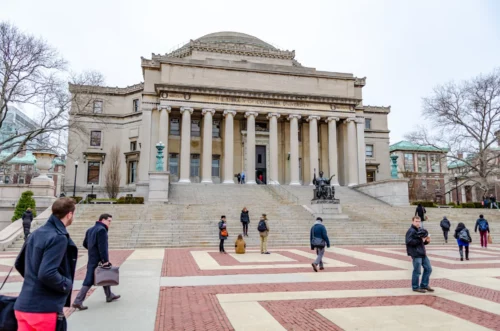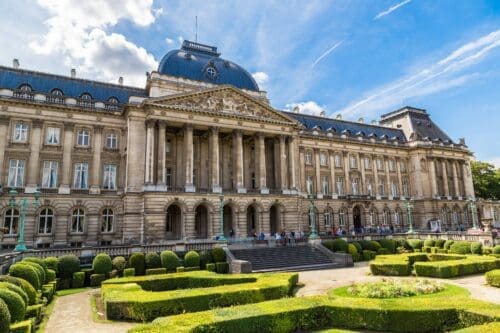Updated On: December 06, 2023 by Yasmin Elwan
Embarking on a journey to explore the most expensive cities in the world unveils not just the nuances of urban living but also the intricate dance between economic factors and quality of life. As we traverse the landscapes of Hong Kong, Singapore, Zurich, Geneva, and Basel, we’ll delve into the methodologies that underpin cost-of-living rankings, unravelling the intricate threads that contribute to the staggering expenses residents and travellers encounter. Understanding the pulse of the most expensive cities to live in the world isn’t just about numbers; it’s also about understanding the economic symphony, including inflation and rent costs, shaping the daily lives of millions.
Methodology Behind Cost of Living Rankings
Behind the curtain of cost-of-living indices lie sophisticated methodologies crafted to capture the intricacies of urban economies. Mercer and the Economist Intelligence Unit (EIU) stand as prominent conductors of this orchestra, considering factors ranging from housing and transportation to groceries and entertainment. It’s a delicate balance, a choreography of data that attempts to distil the essence of what it costs to call a city home. However, these indices aren’t without their critiques; limitations arise, and the lens through which the cost of living is measured may not capture every nuance.
Top 5 Most Expensive Cities in the World
Embarking on a journey through the financial landscapes of the world’s most expensive places, including many European cities, one discovers a symphony of financial intricacies where the cost of living and inflation reflect the unique character of each metropolis. From the towering skyscrapers of Hong Kong to the cultural crossroads of Geneva, each city in this elite group demands a financial commitment that mirrors its economic prowess.
This exploration delves into housing markets sculpted by scarcity, escalating rents, inflation pressures, transportation costs shaped by density, and daily expenses influenced by a city’s unique blend of cultural richness and skyrocketing prices of goods and services. As the financial tempos of Hong Kong, Singapore, Zurich, Geneva, and Basel unfold, the true essence of the cost of living unveils itself—a blend of economic vibrancy, cultural diversity, and the undeniable weight of financial commitments that shape the daily lives of millions.
1. Hong Kong

Nestled in the embrace of Victoria Harbour, Hong Kong emerges as a beacon of economic prowess and, consequentially, one of the world’s most expensive cities. The city’s skyline, adorned with towering skyscrapers, mirrors its elevated cost of living. Housing markets in Hong Kong are notorious for their scarcity and astronomical prices, pushing residents to navigate a landscape where space comes at a premium. Transportation costs, too, reflect the city’s density and daily expenses can quickly escalate. Yet, amidst the financial hustle, Hong Kong offers a unique fusion of cultural richness and modernity that continually draws residents despite the financial challenges.
2. Singapore
The Lion City, perched at the crossroads of Southeast Asia, stands as a global economic hub, luring expatriates and businesses alike. Singapore’s cost of living mirrors its economic success. Housing, often the largest expense, demands a substantial portion of residents’ income. The city-state’s efficient public transport system somewhat alleviates transportation costs, but the overall high prices ripple through daily expenses. The allure of Singapore lies not just in its economic opportunities but also in its multicultural tapestry, creating a vibrant backdrop against the backdrop of economic intricacies.
3. Zurich

Moving to Europe, Zurich, Switzerland, gracefully emerges as one of the continent’s most expensive urban havens. Renowned for its quality of life, the city demands a financial commitment. The Swiss city’s housing market reflects precision and order, mirroring the nation’s reputation for efficiency. Nestled by Lake Zurich and the Alps, the city’s natural beauty is juxtaposed against the financial demands of daily life. Zurich’s residents navigate a landscape where the cost of living is a trade-off for the pristine landscapes, cultural richness, and economic stability the city offers.
4. Geneva

Geneva, a diplomatic and cosmopolitan hub, unfurls along the shores of Lake Geneva, encapsulating both natural beauty and financial sophistication. The city’s reputation for international cooperation is mirrored in its high cost of living, granting its position as the fourth most expensive city in the world. The housing market, shaped by global organisations and diplomatic missions, contributes significantly to the overall expenses residents face. As an expatriate magnet, Geneva offers a lifestyle marked by cultural diversity, world-class amenities, and a relentless pace that matches the financial tempo of this global city.
5. Basel

Rounding off our exploration is Basel, Switzerland, nestled at the meeting point of Switzerland, France, and Germany. While Basel might be less frequently cited than its Swiss counterparts, it stands as a testament to the country’s overall high cost of living. The city’s charm lies in its unique position as a cultural and economic crossroads. Basel’s residents encounter a housing market sculpted by its central location and economic prowess, contributing to the city’s reputation as a financial and cultural powerhouse.
Factors Contributing to High Costs
In the intricate tapestry of the most expensive cities in the world, several factors weave together to create the daunting cost of living. Real estate and housing market dynamics play a pivotal role, with scarcity and demand driving prices to staggering heights. The influence of currency exchange rates further complicates matters, impacting the purchasing power of both residents and businesses.
Local and national economic policies introduce additional layers, shaping the financial landscape and contributing to the overall cost burden. Socioeconomic factors, such as income inequality and wealth distribution, also influence the cost of living, creating a complex interplay that defines these elite urban centres.
Impact on Residents
For residents of the most expensive cities in the world, daily life is a balancing act on the tightrope of high costs. Challenges range from exorbitant housing expenses to elevated transportation and grocery costs, placing substantial strain on household budgets.
Coping strategies become essential, with residents often making trade-offs and prioritising spending. Socioeconomic disparities come to the forefront, as the burden of high living costs disproportionately affects lower-income individuals, exacerbating affordability issues and potentially contributing to widening wealth gaps.
Impact on Businesses
Operating within the realms of the most expensive cities in the world poses distinct challenges for businesses. The exorbitant costs extend beyond personal living to the commercial sphere. High real estate prices elevate overheads, impacting the bottom line. Attracting and retaining talent becomes a strategic imperative as employees navigate the financial demands of city living.
The economic implications ripple through local businesses, influencing pricing strategies, employee benefits, and overall competitiveness. The cost burden may force businesses to recalibrate their operations, seeking a delicate balance between thriving in these economic hubs and managing the inherent financial challenges.
Future Outlook
As we peer into the future, predictions for changes in cost-of-living rankings become a subject of intrigue and speculation. The fluid nature of global economies, coupled with evolving societal dynamics, suggests that the landscape of expensive cities is destined for transformation. Projections anticipate a continual reshuffling of the deck, with certain cities rising in the ranks due to economic surges while others might experience declines influenced by a variety of factors.
Factors Influencing Changes
Several key factors will wield their influence over future changes in cost-of-living rankings. Real estate dynamics, ever-sensitive to supply and demand, will play a pivotal role. Currency fluctuations, tied to geopolitical events and economic policies, may tip the scales for cities in different regions. The ongoing impact of technological advancements, climate considerations, and shifts in global trade patterns are variables that could potentially reshape the cost-of-living landscape.
Potential Shifts in Global Economic Dynamics
The evolving dynamics of the global economy are poised to orchestrate significant shifts in cost-of-living rankings. The rise of emerging economies and the recalibration of trade relationships may elevate the prominence of certain cities, bringing them into the spotlight of heightened living costs. Conversely, geopolitical tensions, economic downturns, or unforeseen crises could precipitate shifts, influencing the financial burdens faced by residents and businesses in these urban centres. The interconnectedness of the global economic stage ensures that changes in one corner reverberate across the entire panorama of expensive cities, creating a dynamic and ever-evolving narrative.
Navigating the complexities of the most expensive cities in the world requires a nuanced understanding of the intricate threads that contribute to high living costs. From the microcosm of individual households to the macrocosm of thriving businesses, the financial landscape is shaped by real estate dynamics, currency intricacies, economic policies, and socioeconomic nuances. In this elite urban realm, residents and businesses alike must adapt, innovate, and strategically manoeuvre to thrive amidst the inherent financial pressures.











